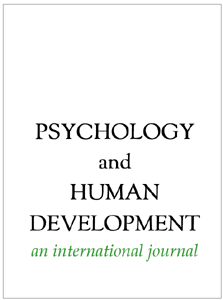The use of kinetic imagery by children and adults
Main Article Content
In this study, we examined developmental improvement in kinetic imagery skills as related to differences in the utilizability vs. evocability of those skills. Analyses were conducted on performance levels and response times for task trials in which participants were required to determine which of 3 larger blocks could be “made” by combining (through imagery) 2 smaller blocks. Adults performed better than did 9- or 11-year-olds, especially for trials that required mental representation of rotation as well as horizontal movement. Examination of the effects of 2 conditions of task administration indicated no developmental changes in the adjustment of methods of task solution to specific instructions. However, analyses of response times suggested that age differences in performance levels could be attributed to differences in the degree to which possibilities of ways in which blocks could be combined through mental imagery were exhaustively examined.
